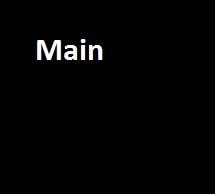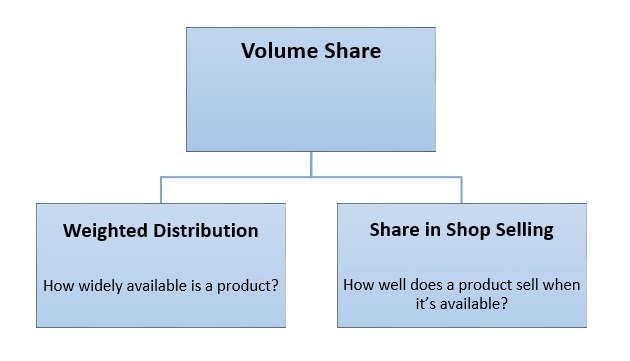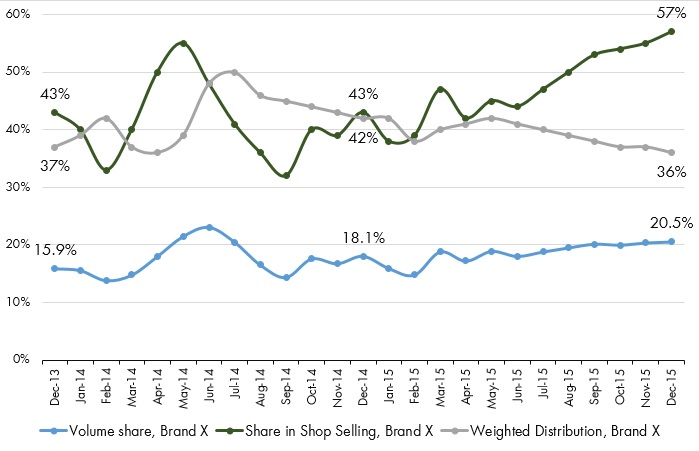ABOUT RETAIL AUDIT


Share in Shop Selling demonstrates actual demand for products cleared from distribution influence. Share in Shop Selling shows potential product share in the case of 100% distribution. It is share of the product in the outlets that stock this product (not in the entire Universe):
Share in Shop Selling = Sales Volume of the Product ÷ Total Sales Volume of the Category in the stores which sell the Product
Based on Retail Audit data we can calculate it the following way:
Share in Shop Selling = Volume Share ÷ Weighted Distribution
Why? We know that:
Weighted Distribution = Sales Volume of the Category in the stores which sell the Product ÷ Total Sales Volume of the Category
it means
Sales Volume of the Category in the stores which sell the Product = Weighted Distribution * Total Sales Volume of the Category
in this case
Share in Shop Selling = Sales Volume of the Product ÷ Sales Volume of the Category in the stores which sell the Product = Sales Volume of the Product ÷ Weighted Distribution * Total Sales Volume of the Category = Volume Share ÷ Weighted Distribution
It is obvious that Share in Shop Selling and Weighted Distribution are the drivers of Volume Share.

Example:

In 2014, Brand X Share growth was driven by Weighted Distribution while Share in Shop Selling was stable. However in 2015 the situation changed: weighted distribution declined sharply and volume growth was supported by Share in Shops Selling only.
Above formula is based on Volume, but can be also calculated in Value/Items terms. In this case you will need to have Weighted Distribution in Value/Items or ask the agency for support.